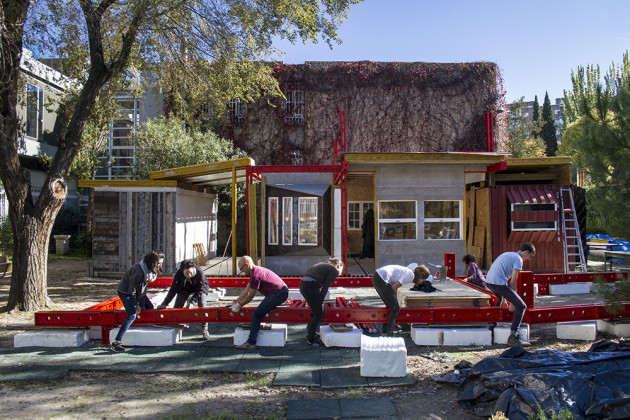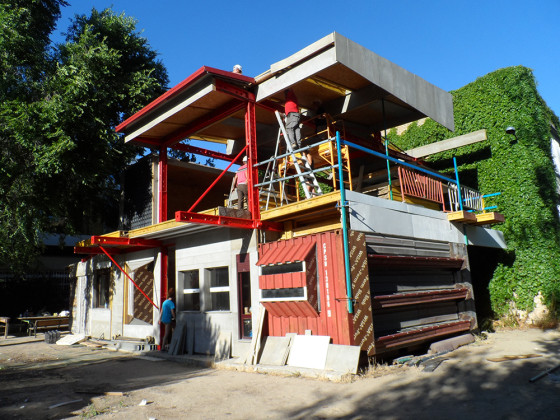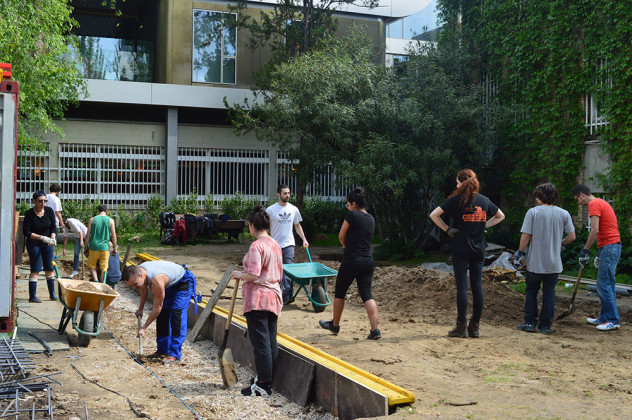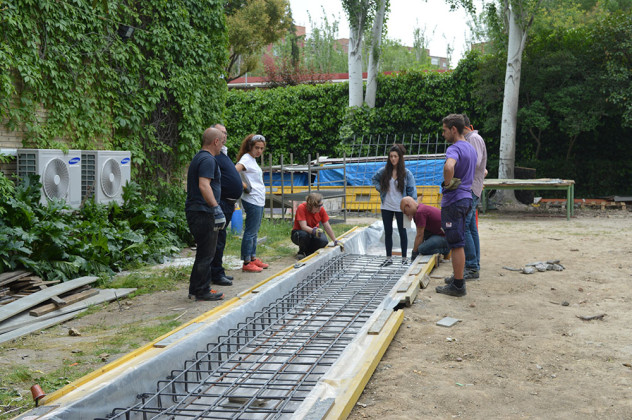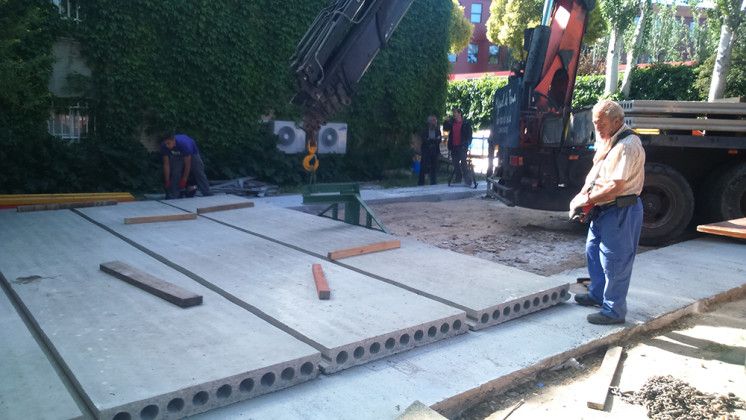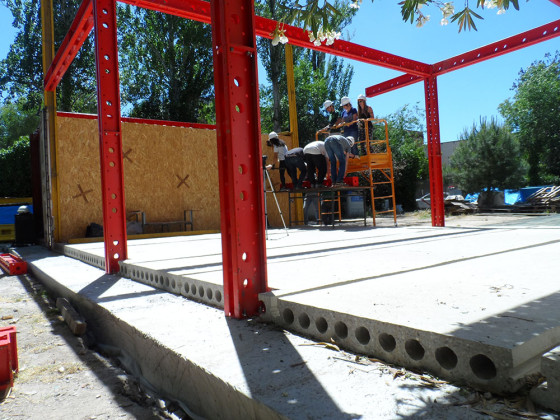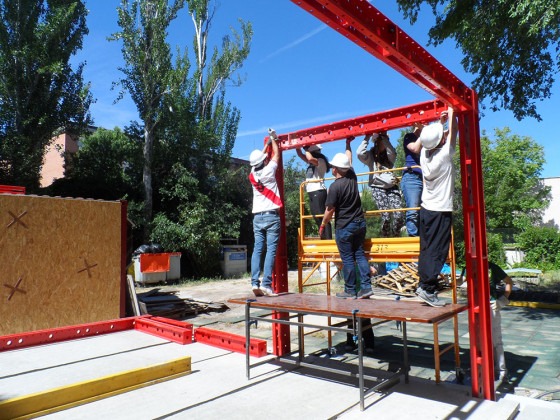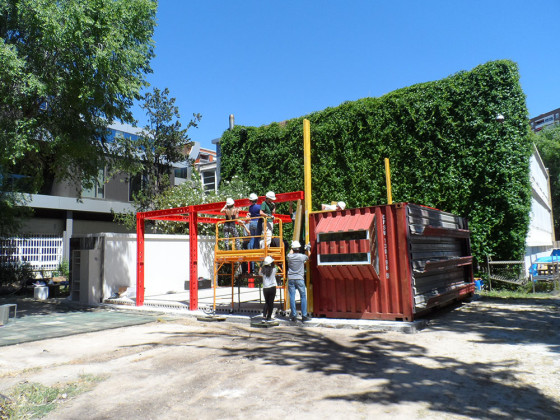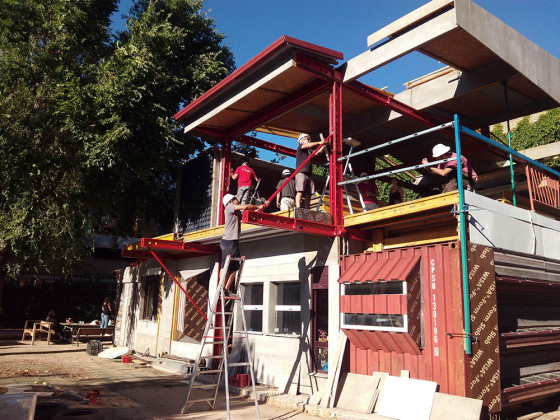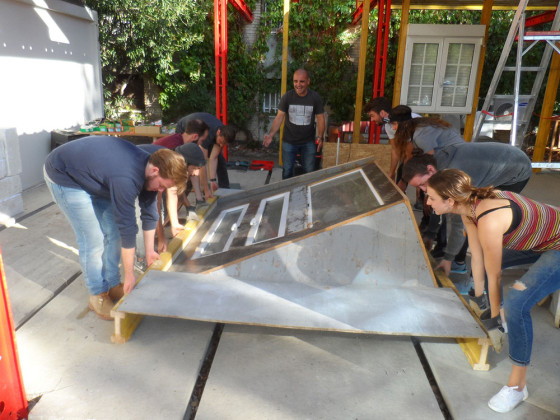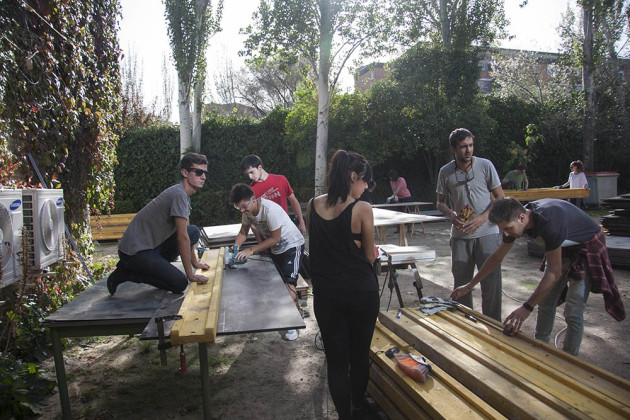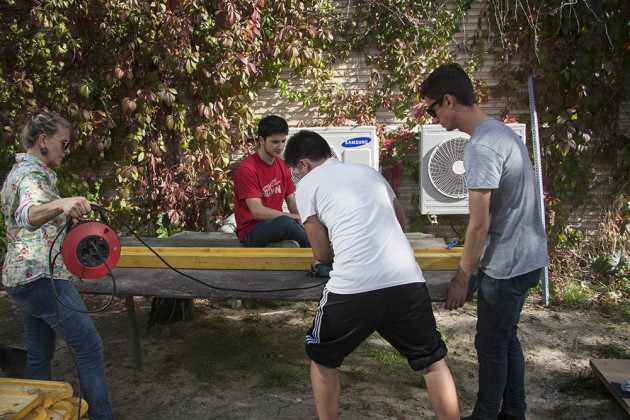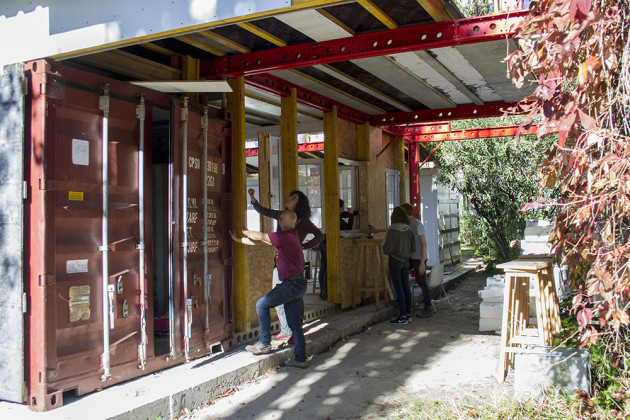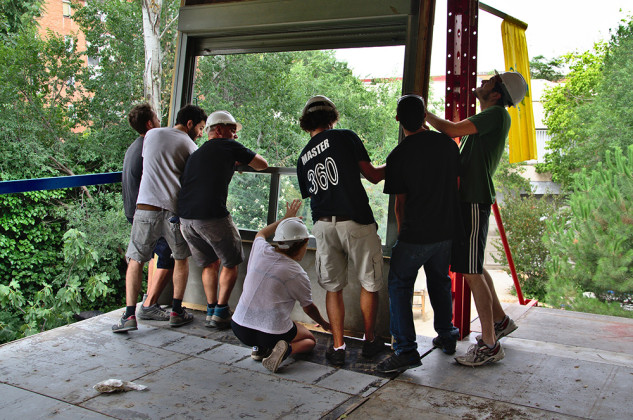The School Grows
Recetas Urbanas tells the story of “The School Grows”, a project in which an extension has been constructed for the Madrid School of Design together with the students and the lecturers. Thanks to the collaboration, the project turns the self-building activity into an educational opportunity
The Need as a Starting Point
The School Grows is a project launched at the Madrid School of Design (Escuela Superior de Diseño de Madrid) during the academic year 2013-14, as a response to face an urgent need of space. Since its opening in 2011, the School imparts Degrees in Graphic, Fashion, Product and Interior Design. Currently, the School hosts more than 700 students in a 1965 building originally intended to house 172. Considering that the building had never been extended since its construction, it is not difficult to figure out how much it was in need of extra space. As a first step, the School turned to educational authorities, since they were responsible for the situation and, thus, for finding a solution. Different proposals were submitted to them, including building an entirely new pavilion within the land belonging to the school, extending the current building or moving to a bigger place. They all were welcome at first, but finally rejected because of lack of funds. The School, then, decided to face the situation only with its own human and material resources. It was suggested to turn the space problem into a teaching activity for students of Interior Design enrolled in Prefabrication & Modular Elements course. The ideas proposed by the students were submitted to different prefab units companies which were asked for an estimate to accomplish them. But, suddenly, the same idea came into the minds of the school board and the lecturer in charge of the course: why not doing it themselves and self-building the school?
Through self-construction a double aim was accomplished: first, funds would be saved, and second, the self-building activity could be turned into an educational opportunity from which a very valuable learning could be extracted. Once considered the pros and the cons, before making a decision the school made contact with our office, "Recetas Urbanas" [Urban Recipes] and offered us to head the self-construction project. They didn't make this choice by chance. In addition to our extensive experience in selfbuilding projects, we had previously collaborated with the School Arte4 before it became the Madrid School of Design. Our answer wasn't long in coming and we were very enthusiastic about the idea from the outset. A team of school lecturers was selected to take charge of the activity together with us and we got down to work. Thinking about the heading of the email in which we accepted to participate and invited the school community to get involved, we wrote the line "The School Grows". It was the birth of a project which today hosts more than 150 people.
The Opportunity
The proposed building extension included 170 square meters on two floors that rely on the existing building, in order to save costs in the structure. We chose a construction system based on prefab units made by ourselves and allowing for a dry installation with no need of mortar—so we skipped the necessity of hiring companies to provide specialized services. Both the structural system and most of the employed material were recycled.
It is important to note that the new building project was never understood as a closed design, but as a work-in-progress to be solved as it happens. The design itself is conceived, therefore, as a process in which the participants are not mere workforce that "helps" or "carries out" orders from the headship: they share with them, with their decisions, the responsibility of what is built. In order to not to interfere with academic activity, the construction of the new building is carried out through workshops that take place every fortnight. These workshops are usually three days long and are divided in morning/afternoon shifts. So the students interested in participating can do it without neglecting their studies, since the School offers both morning and afternoon courses for the four Degrees in Design. So far fifteen workshops have been taken place.
This activity is now part of the curriculum of the school and students are allowed to request that their work be included in their transcripts, filling up to the 6 ECTS credits of free choice subjects they have to complete. The attendance to the workshop is quantified in hours which can be rated as ECTS credits at the end of the year.
Lecturers are also encouraged to include different activities related to the project within their syllabi, contributing to create a space of collaboration with different levels of participation, be it an isolated support for a concrete task —for instance the carrying out of some element—, be it a more extensive task such as the interior design of the spaces of the new building. Currently, the first floor is almost finished and so are the forge and closure elements for the second floor, as well as the roof. This has been possible, as we said before, thanks to more than one hundred and fifty people.
For the last years, the self-construction workshops have been attended by students and lecturers from Uruguay, Colombia, Brazil, Scotland, Switzerland, Canada, USA, Russia, France, Great Britain, Chile, Venezuela, Italy, Malaysia, Poland, Mexico, Germany and China, as well as from many cities and towns of Spain. Thanks to that, on the one hand, we have become familiar with programs and teaching methodologies in Design developed all around the world and, on the other, we have been able to make our school project known.
This fruitful transfer of theoretical background and practical knowledge has gone beyond educational community. The School Grows is open to members of groups, associations or nonacademic professionals from different fields, willing to participate in this co-working experience. We have been fortunate to have teams of developers who design an app for better managing collaborative work, engineers and architects interested in "think-through-doing", journalists, photographers and media editors committed to broadcasting and disseminating the project.
Finally, since the beginning of the project, we have had the efficient cooperation of the school administrative staff. Both the administrator and the secretary has got involved and assumed the accounting of the workshops, despite an increased workload. Otherwise these workshops couldn't have been organized so easily. Cleaning staff has also made a big effort to keep the building clean during the work days, even during the excavation of foundations. Maintenance staff and janitors have supported by unlocking gates, delivering orders, tools, support facilities, etc.
The Challenge
To sum up in a few lines such a complex experience is a difficult task, and some details have to be left aside. One cannot fail to mention, however, some of them before concluding. This extension projects has made us look ahead to the future, but it has been also necessary to look back to the past and rediscover our own history. We have known the origins of the school, its changes and transformations in keeping to the different educational curricula, and now we understand better the place we inhabit, the district of Madrid where the school is located and its history.
We have worked together for more than one year and a half and we have celebrated sharing a good food and drinking a toast to our achievements. Teamworks have been set up to disseminate the experience through flyers, social networks, websites, media, etc. It has been taken place a landscaping workshop with a view to arrange the landscape around the new building and another focused on the design and manufacturing of furniture is forthcoming.
And the most important thing: we can say that the educational community is today fully accustomed to everyday cohabitation with constructions works: they feel these works as something of their own. New bonds have arisen between people, beyond their academic and professional roles. The searching for a new physical space has thus made possible the creation of a new human space which, in contrast to the former, has no deadline and will continue to produce learning opportunities in the future. In the School of Design we build new spaces, but also new and different ways to grow and share knowledge.
 02.09.2016
02.09.2016





